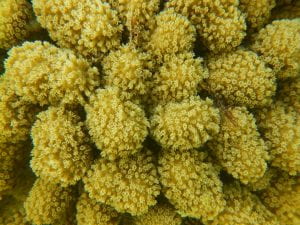Today we were able to snorkel three new regions, two of which we collected data documenting the density of live and dead coral on two of the patch reefs. However, I must say getting into the saltwater made me extremely aware of all the mosquito bites I continue to scratch despite a general knowledge to avoid doing so. But overall, things went far smoother and more quickly than yesterday. Collecting data was an expeditious process, as the currents were less intense and my snorkeling abilities are gradually improving. The first two patch reefs were inside of the marine protected area, yet illustrated the great variability between patches and within a single patch reef itself. Some areas were sandy, many were covered with the rubble remanence of dead stony corals, some were packed with soft corals, and others had some healthy decently sized colonies of stony corals. Like always, I enjoyed going to these new areas and viewing the immense complexities of these ecosystems. I did spot a few patches and fragments of A. cervicornis, which I was not expecting due to their current rarity as a result of disease and the fact that the conditions of the patch reef were not what is normally thought to be their ideal habitat. A small little glimmer of hope from a species I grow fonder of with each encounter. But not all things named “coral” make the list of favorites. Both of these reefs had tons of fire coral spread throughout. Despite the name, fire coral is not a true coral, but fitting for its name it has a very unpleasant sting when touched. I accidentally brushed up against these corals a few times throughout the morning, and I must say it’s not a desirable sensation.
Later in the afternoon, there was an optional snorkeling activity. Although a nap sounded exceptionally enticing today, there’s not enough time on this trip to see everything and be completely rested, and that’s perfectly fine with me. We traveled to a shallow lagoon-like area, with lots of seagrasses, fish, anemones, and some corals. It would seem that the stony corals have taken a bit of a downturn in this region of the atoll due to a variety of factors, but there were still some colonies trying their best. I was able to take a cool photo of the polyps of Porites, where you can see the almost fluffy appearance the tentacles create.
We wrapped up the night with some fascinating lectures on the logistical aspects of protecting Glover’s atoll, the marine protected area, and Belizean water overall. As of now, I am definingly ready to go to bed, after a healthy application of hydrocortisone to my multitude of bug bites.

